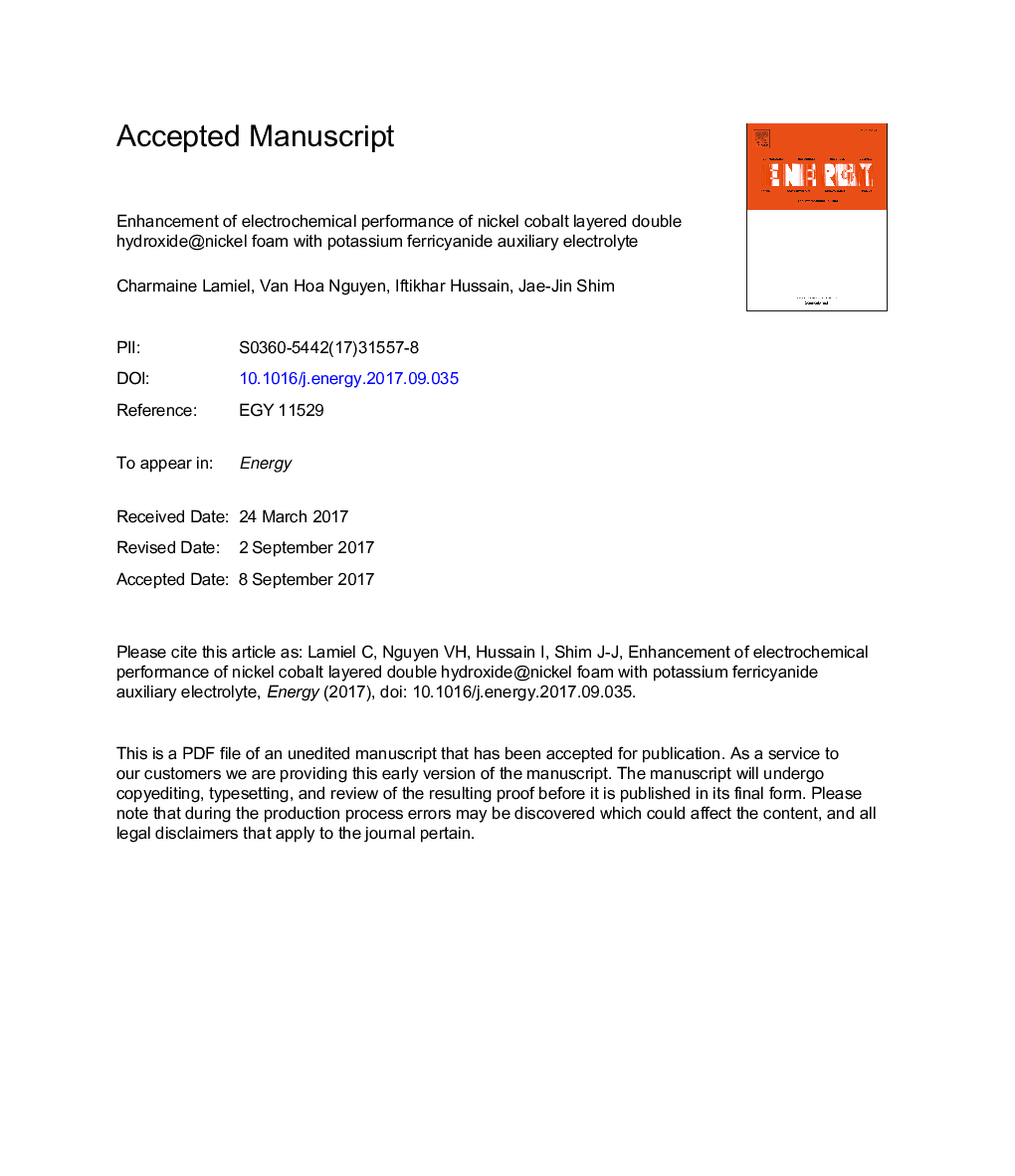| Article ID | Journal | Published Year | Pages | File Type |
|---|---|---|---|---|
| 5475455 | Energy | 2017 | 36 Pages |
Abstract
Metal oxide nanostructures have been studied widely to overcome the limitations in the capacitance of the carbon-based supercapacitor electrode materials. An electrode with a very porous 3D structure is preferred to facilitate the mass transfer of large electrolyte ions. In this study, highly nanostructured, binder-free Ni-Co-based pseudocapacitive electrodes were synthesized directly on porous 3D structured nickel foam (NF) current collectors using low-power microwave irradiation. The electrochemical performance of the Ni-Co layered double hydroxide (Ni-Co-LDH) showed better performance than Ni-Co oxide (Ni-Co-O) with the further addition of redox additive/active electrolytes, such as K3Fe(CN)6. The specific capacitances of 4664Â FÂ gâ1 for Ni-Co-LDH and 1758Â FÂ gâ1 for Ni-Co-O at 5Â mAÂ cmâ2 in the KOH/K3Fe(CN)6 electrolyte were improved greatly compared to the values of their corresponding materials in the conventional KOH electrolyte (2875 and 250Â FÂ gâ1, respectively). Interestingly, the Ni-Co-LDH//AC asymmetric device exhibited a specific capacitance of 108.9Â FÂ gâ1 and an energy density of 38.7Â Wh kgâ1 with a stability of 61.9% after 5000 cycles. The facile yet cost-effective synthesis of nanostructured electrodes provides a versatile approach for the design of high-performance pseudocapacitive electrodes for future energy-storage systems.
Keywords
Related Topics
Physical Sciences and Engineering
Energy
Energy (General)
Authors
Charmaine Lamiel, Van Hoa Nguyen, Iftikhar Hussain, Jae-Jin Shim,
